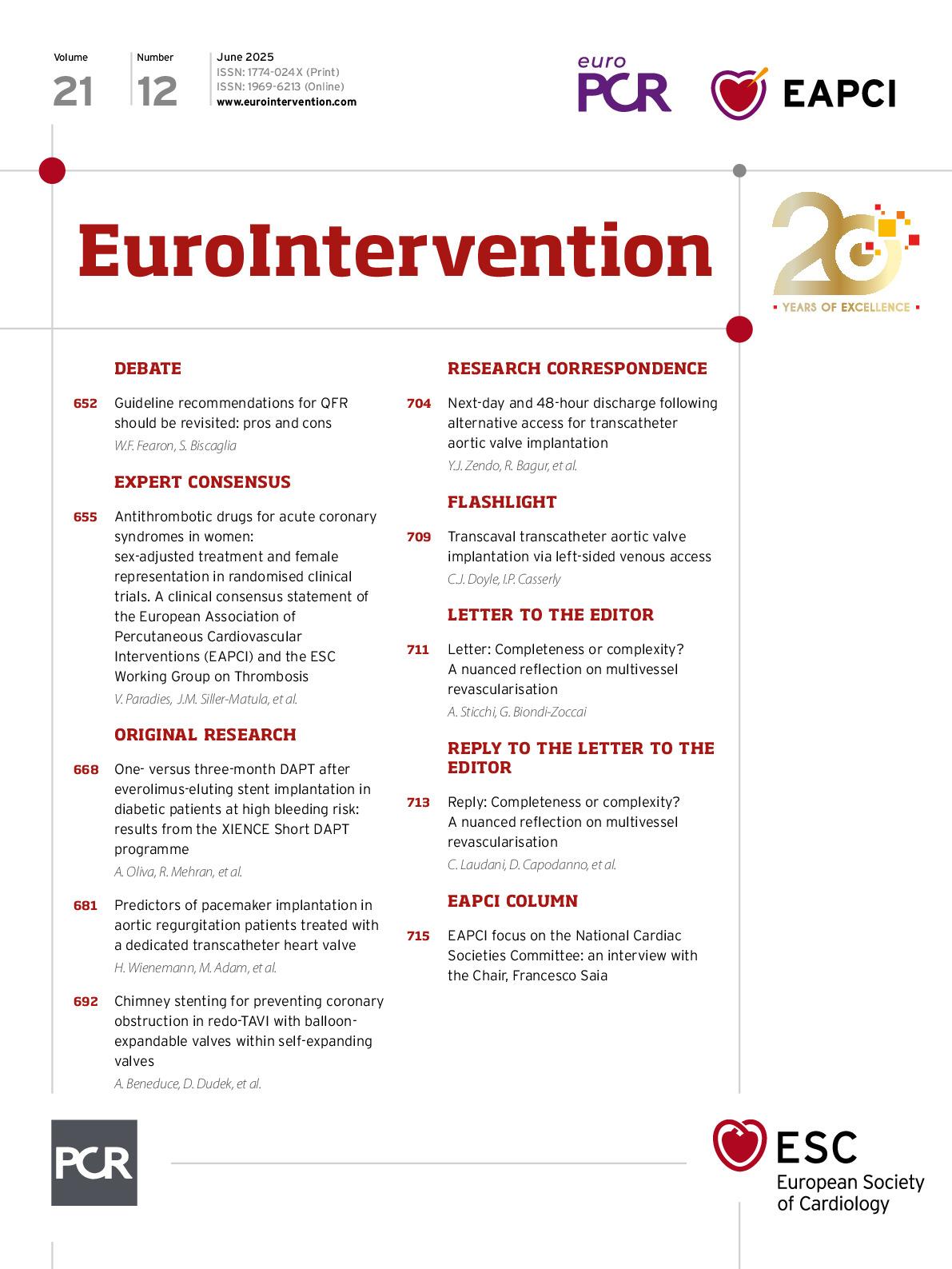Early discharge (ED) and next-day discharge (NDD) pathways following transfemoral (TF) transcatheter aortic valve implantation (TAVI) have been gaining acceptance among Heart Teams123. We recently demonstrated the safety and feasibility of NDD following TAVI with three different types of commercially available transcatheter heart valves3. However, there is a lack of data on ED and NDD in patients undergoing TAVI using alternative access (A-TAVI). Therefore, this research assessed the safety of an ED/NDD pathway in patients who underwent A-TAVI.
Data from consecutive, all-comers patients who underwent elective A-TAVI between July 2018 and November 2024 were prospectively collected in a dedicated database. Patients followed a fast-track anaesthesia pathway consisting of extubation in the hybrid operating room, 1-hour recovery in the post-anaesthesia care unit, and transfer to the inpatient ward, similar to TF-TAVI under conscious sedation23. Mobilisation was promptly encouraged within four hours following the completion of the procedure, and a transthoracic echocardiogram was performed the following morning. Patients had an electrocardiogram (ECG) shortly after TAVI and again the following day. To qualify for the NDD pathway,...
Sign up for free!
Join us for free and access thousands of articles from EuroIntervention, as well as presentations, videos, cases from PCRonline.com

